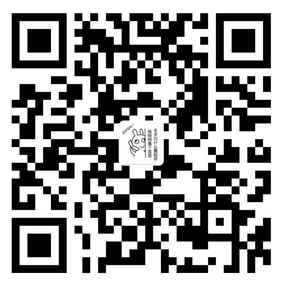python数据结构之栈与队列
python数据结构之栈与队列
用list实现堆栈stack
堆栈:后进先出
如何进?用append
如何出?用pop()
>>>
>>> stack = [3, 4, 5]
>>> stack.append(6)
>>> stack.append(7)
>>> stack
[3, 4, 5, 6, 7]
>>> stack.pop()
7
>>> stack
[3, 4, 5, 6]
>>> stack.pop()
6
>>> stack.pop()
5
>>> stack
[3, 4]
用list实现队列queue
队列:先进先出
如何进?用append
如何出?用popleft()
>>>
>>> from collections import deque
>>> queue = deque(["Eric", "John", "Michael"])
>>> queue.append("Terry") # Terry arrives
>>> queue.append("Graham") # Graham arrives
>>> queue.popleft() # The first to arrive now leaves
'Eric'
>>> queue.popleft() # The second to arrive now leaves
'John'
>>> queue # Remaining queue in order of arrival
deque(['Michael', 'Terry', 'Graham'])
自定义堆栈
栈是限定仅在表尾进行插入或删除操作的线性表。对于栈来说,表尾称为栈顶,表头称为栈底。不含元素的空表称为空栈。
堆栈ADT(抽象数据类型)一般提供以下接口:
| 函数 | 说明 |
|---|---|
| Stack() | 创建堆栈 |
| push(item) | 向栈顶插入项 |
| pop() | 删除栈顶的项 |
| clear() | 清空堆栈 |
| is_empty() | 判断堆栈是否为空 |
| size() | 返回堆栈中项的个数 |
| top() | 返回栈顶的项 |
| print() | 打印堆栈 |

class Stack(object):
"""堆栈"""
def __init__(self, item = []):
self.item = []
if len(item):
for i in item:
self.item.append(i)
def push(self, item):
self.item.append(item)
def clear(self):
del self.item
def is_empty(self):
return self.size() == 0
def size(self):
return len(self.item)
def print(self):
print(self.item)
def top(self):
return self.item[-1]
def pop(self):
data = self.top()
self.item.pop()
return data
print("创建堆栈")
stack = Stack([1,2,3])
stack.print()
print("向栈顶插入元素")
stack.push(4)
stack.print()
print("判断堆栈是否为空")
print(stack.is_empty())
print("返回堆栈中项的个数")
print(stack.size())
print("返回栈顶的项")
print(stack.top())
print("删除栈顶的项")
stack.pop()
stack.print()
print("清空堆栈")
print(stack.clear())
程序输出:
创建堆栈
[1, 2, 3]
向栈顶插入元素
[1, 2, 3, 4]
判断堆栈是否为空
False
返回堆栈中项的个数
4
返回栈顶的项
4
删除栈顶的项
[1, 2, 3]
清空堆栈
None
自定义队列
队列是一种先进先出的线性表。它只允许在表的一端进行插入,在另一端删除元素。
队列ADT(抽象数据类型)一般提供以下接口:
| 函数 | 说明 |
|---|---|
| Queue() | 创建队列 |
| enqueue(item) | 向队列插入元素 |
| dequeue() | 删除队列的元素 |
| clear() | 清空队列 |
| is_empty() | 判断队列是否为空 |
| size() | 返回队列中项的个数 |
| print() | 打印队列 |
class Queue(object):
"""模拟队列"""
def __init__(self, item = []):
self.item = []
if len(item):
for i in item:
self.item.append(i)
def enqueue(self, item):
self.item.append(item)
def dequeue(self):
self.item.pop(0)
def clear(self):
del self.item
def is_empty(self):
return self.size() == 0
def size(self):
return len(self.item)
def print(self):
print(self.item)
print("创建队列")
queue = Queue([1,2,3])
queue.print()
print("向队列插入元素")
queue.enqueue(4)
queue.print()
print("从队列中删除元素")
queue.dequeue()
queue.print()
print("判断队列是否为空")
print(queue.is_empty())
print("返回队列中项的个数")
print(queue.size())
queue.print()
print("清空队列")
print(queue.clear())
程序输出结果:
创建队列
[1, 2, 3]
向队列插入元素
[1, 2, 3, 4]
从队列中删除元素
[2, 3, 4]
判断队列是否为空
False
返回队列中项的个数
3
[2, 3, 4]
清空队列
None
参考
《数据结构》严蔚敏
https://docs.python.org/3.6/tutorial/datastructures.html#more-on-lists
作者:
tongqingliu
出处: http://www.cnblogs.com/liutongqing/
本文版权归作者和博客园共有,欢迎转载、交流,但未经作者同意必须保留此段声明,且在文章明显位置给出原文链接。
如果觉得本文对您有益,欢迎点赞、欢迎打赏。


出处: http://www.cnblogs.com/liutongqing/
本文版权归作者和博客园共有,欢迎转载、交流,但未经作者同意必须保留此段声明,且在文章明显位置给出原文链接。
如果觉得本文对您有益,欢迎点赞、欢迎打赏。


分类:
Python
, Data Structure
posted on 2017-10-11 21:52 tongqingliu 阅读(785) 评论(0) 编辑 收藏 举报


【推荐】国内首个AI IDE,深度理解中文开发场景,立即下载体验Trae
【推荐】编程新体验,更懂你的AI,立即体验豆包MarsCode编程助手
【推荐】抖音旗下AI助手豆包,你的智能百科全书,全免费不限次数
【推荐】轻量又高性能的 SSH 工具 IShell:AI 加持,快人一步
· 10年+ .NET Coder 心语,封装的思维:从隐藏、稳定开始理解其本质意义
· .NET Core 中如何实现缓存的预热?
· 从 HTTP 原因短语缺失研究 HTTP/2 和 HTTP/3 的设计差异
· AI与.NET技术实操系列:向量存储与相似性搜索在 .NET 中的实现
· 基于Microsoft.Extensions.AI核心库实现RAG应用
· TypeScript + Deepseek 打造卜卦网站:技术与玄学的结合
· 阿里巴巴 QwQ-32B真的超越了 DeepSeek R-1吗?
· 【译】Visual Studio 中新的强大生产力特性
· 10年+ .NET Coder 心语 ── 封装的思维:从隐藏、稳定开始理解其本质意义
· 【设计模式】告别冗长if-else语句:使用策略模式优化代码结构